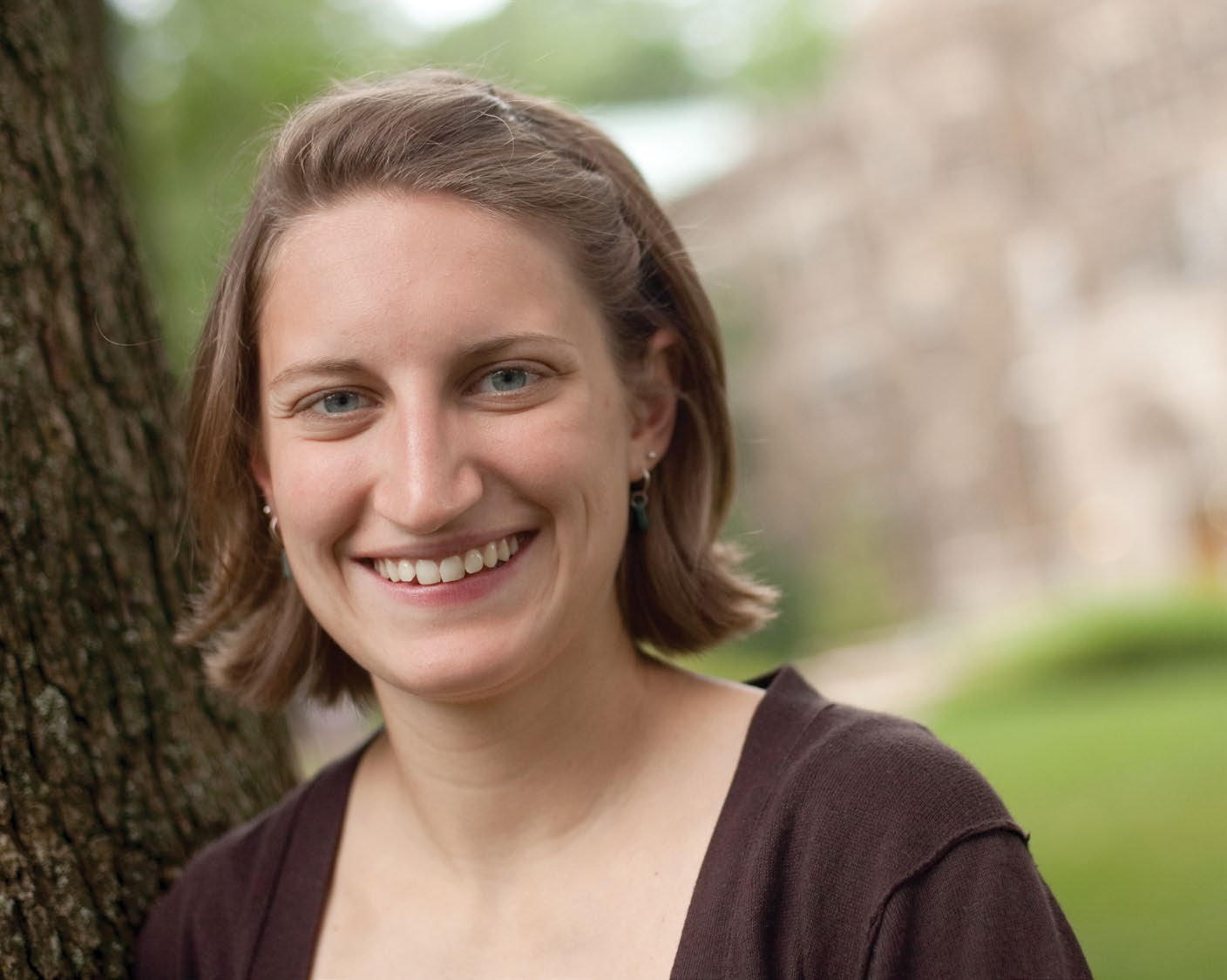In five years, the David and Lorraine Freed Undergraduate Research Symposium has become a valuable proving ground for promising engineering students.
The event, held each spring in the P.C. Rossin College of Engineering and Applied Science, gives engineering students the chance to showcase their research. Students have just a few short minutes to express the significance of their work and answer questions from a team of judges that includes faculty and industry researchers.
More than 60 students have competed to date in the symposium, most as individuals and a few as pairs. Students spend about one year preparing their projects. Their work has covered almost every conceivable area of engineering, from crystal grain growth to virtual reality to optical technologies.
Corey Luthringer ’09, a chemical engineering major, finished third in 2009 for a project titled “Microvascular Fabrication via Dielectrophoretic Assembly.” Luthringer investigated how wires form from nanoparticles when exposed to an electric field gradient, and how the characteristics of these wires vary under different conditions. The goal is to use the wires to model such microvascular phenomena as the formation and propagation of tumor tissues.
Taking part in the symposium, says Luthringer, helped her prepare for her new job in R&D at Schering-Plough, a pharmaceutical company in New Jersey.
“The symposium provided an environment for me to learn proper industrial and academic research methods, as well as a forum for sharing my findings with students, professors, staff and industrial visitors,” says Luthringer. “It helped me learn how to explain my research to an audience using a variety of skill sets and technical knowledge.”
Geoffrey Brunn ’06, a structural engineering and architecture double major, took first place at the 2005 symposium. Now a structural engineering assistant in the San Francisco office of the Chicago-based international architectural and engineering firm of Skidmore, Owings & Merrill LLP (SOM), Brunn says his project involved studying a new form of precast concrete that flows like water, and proving that the material was cost-effective.
After graduating from Lehigh, Brunn earned a master’s degree in structural engineering at UC Berkeley, then landed the job at SOM, where he designs tall buildings in the Middle East, China and other parts of the world.
“I’m constantly defending my ideas,” he says, “so I draw on my experience from the symposium daily.”
The symposium benefited both his resume and his self-confidence, says Brunn.
“Receiving the praise of established engineers, scientists and businessmen, for me, was a very valuable ‘work hard and believe in yourself’ lesson.”
David Bell ’07, a bioengineering major, won first prize in 2007 for a project titled “Finite Element Analysis of Clinical PressureFlow Wave Forms in the Eustachian Tube.” Bell is now a Ph.D. candidate in the biomedical engineering program at the University of Utah, where he studies the mechanics of cerebral vasculature, particularly when blood vessels are exposed to explosions, accidents or other severe impacts.
Bell says the Freed award opened the door for him to present his work at ASME’s Biomedical Conference in Colorado.
“That experience really boosted my confidence because I saw that there were people who cared about the work I do.”
The award also helped him gain admission into some of the best graduate schools, including Johns Hopkins, says Bell.
“The Freed Symposium enabled me to do recognizable research that then was judged by a peer review panel. I think that stuck out on my resume.”
Sean Kessler ’08, a chemical engineering major, won first prize in 2008, his third and final year at Lehigh, for research into the timed release of Naproxen, an antiinflammatory drug sold as Aleve.
One challenge in developing controlled-release medications, says Kessler, is to maintain a release rate that keeps drug levels in the body within the therapeutic range and avoids the “burst effect,” in which a large and sometimes toxic amount of drug is emitted at one time.
Now an Energy Fellow and Ph.D. candidate in chemical engineering at MIT, Kessler studies atmospheric chemistry, specifically the sources and evolution of organic aerosols in the atmosphere.
With his funding from the Freed prize, Kessler will travel to the annual meeting of the American Institute of Chemical Engineers (AIChE) in November to give a talk on his project.
“The Freed Symposium experience taught me how to comport myself in presenting research work,” says Kessler, “and how to articulate the most important aspects of my work to an audience that has varying levels of familiarity with the field.”

